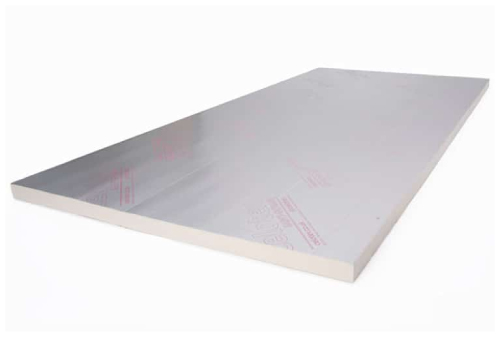In the pursuit of creating sustainable buildings, understanding the environmental impact of construction materials is paramount. Celotex insulation board 25mm, a popular choice for insulating walls, floors, and roofs, offers thermal efficiency benefits, but what about its environmental footprint? In this article, we’ll delve into the environmental considerations surrounding Celotex insulation board 25mm, examining its production process, recyclability, and overall sustainability.
Understanding Celotex Insulation Board 25mm:
Celotex insulation board 25mm is a type of rigid foam insulation board manufactured by Celotex, a renowned provider of insulation solutions. With a thickness of 25mm, this insulation board offers excellent thermal resistance, making it suitable for a variety of applications where space is limited but thermal performance is crucial. Made from polyisocyanurate (PIR) foam, Celotex insulation board 25mm provides effective insulation to improve energy efficiency in buildings.
Production Process:
The production process of Celotex insulation board 25mm involves several stages, from raw material extraction to manufacturing and distribution. The primary raw materials used in PIR foam insulation production are derived from petrochemical sources, which raises concerns about the environmental impact of fossil fuel extraction and processing. Additionally, the manufacturing process itself consumes energy and may involve the use of chemical additives and blowing agents, some of which may have environmental implications.
Environmental Considerations:
Despite the use of petrochemical-based materials in its production, Celotex insulation board 25mm can still offer environmental benefits when compared to other insulation options. Its high thermal performance helps reduce energy consumption in buildings, leading to lower greenhouse gas emissions and reduced reliance on fossil fuels for heating and cooling. By improving energy efficiency, Celotex insulation board 25mm can contribute to overall carbon emissions reductions and help mitigate climate change.
Recyclability and End-of-Life Disposal:
One critical aspect of assessing the environmental impact of insulation materials is their recyclability and end-of-life disposal. While Celotex insulation board 25mm is not typically recyclable in its current form due to the complexity of its composition, efforts are being made to improve recycling capabilities and explore alternative disposal methods. Some manufacturers offer take-back programs or recycling initiatives to collect and recycle insulation waste, diverting it from landfills and reducing environmental impact.
Sustainability Initiatives:
In response to growing environmental concerns, Celotex and other insulation manufacturers are actively working to improve the sustainability of their products and operations. This includes efforts to reduce energy consumption and greenhouse gas emissions during manufacturing, as well as initiatives to increase the use of recycled materials and renewable energy sources. By investing in sustainable practices and technologies, Celotex aims to minimize its environmental footprint and contribute to a more sustainable built environment.
Life Cycle Assessment:
A comprehensive life cycle assessment (LCA) can provide valuable insights into the environmental impact of Celotex insulation board 25mm throughout its entire life cycle, from raw material extraction to end-of-life disposal. LCAs consider factors such as energy consumption, greenhouse gas emissions, resource depletion, and waste generation, helping identify opportunities for improvement and optimization. By conducting LCAs, Celotex can better understand and address the environmental impacts of its products and processes.
Regulatory Compliance:
In addition to voluntary sustainability initiatives, Celotex insulation board 25mm must also comply with various regulatory requirements and industry standards related to environmental performance and product safety. This includes regulations governing chemical emissions, fire safety, and energy efficiency, as well as standards for recycled content and sustainable sourcing. By adhering to these regulations and standards, Celotex ensures that its insulation products meet the necessary environmental criteria and contribute to a healthier and more sustainable built environment.
Final Thoughts:
In conclusion, while Celotex insulation board 25mm may have environmental implications associated with its production and disposal, it also offers significant benefits in terms of energy efficiency and building performance. By improving thermal insulation and reducing energy consumption, Celotex insulation board 25mm can help mitigate climate change and promote environmental sustainability in the construction industry. Moving forward, ongoing efforts to improve recyclability, reduce environmental impact, and comply with regulatory requirements will be essential for ensuring that Celotex and other insulation manufacturers continue to prioritize environmental responsibility in their operations.
